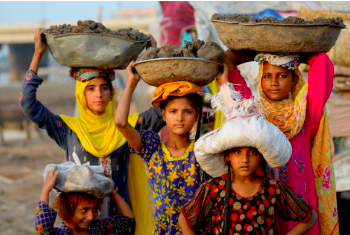ILO/UNICEF: social protection contributes to reducing child labour

The newest report “The role of social protection in the elimination of child labour”, issued jointly by the International Labour Organization (ILO) and the United Nations Children's Fund (UNICEF), calls for the closing of the social protection coverage gap in order to reduce child labour.
For nearly two decades the world was making steady progress in reducing child labour. Unfortunately, due to the conflicts, crises and COVID-19 pandemic which have occurred in the last few years, many families have been plunged into poverty. As a consequence, millions of children have been forced into labour. According to the report, nowadays, 160 million children all over the world, aged from 5 to 17 years old, are still engaged in child labour. Almost half of them participate in hazardous work which exposes them to physical and emotional harm. ILO and UNICEF underline that child labour is a violation of every child’s right to childhood as well as a breach of every government’s fundamental duty to protect its children.
The report provides a review of the impact of social protection in combating child labour and makes a number of recommendations to build comprehensive, child-sensitive social protection systems. According to the report, social protection reduces family poverty and vulnerability, thereby diminishing key drivers of child labour. The most important recommendations include: closing the social protection coverage gap by prioritising child benefits; building integrated social protection systems; ensuring that the design of social protection programmes is inclusive and child-labour sensitive; and promoting investment in social protection.

